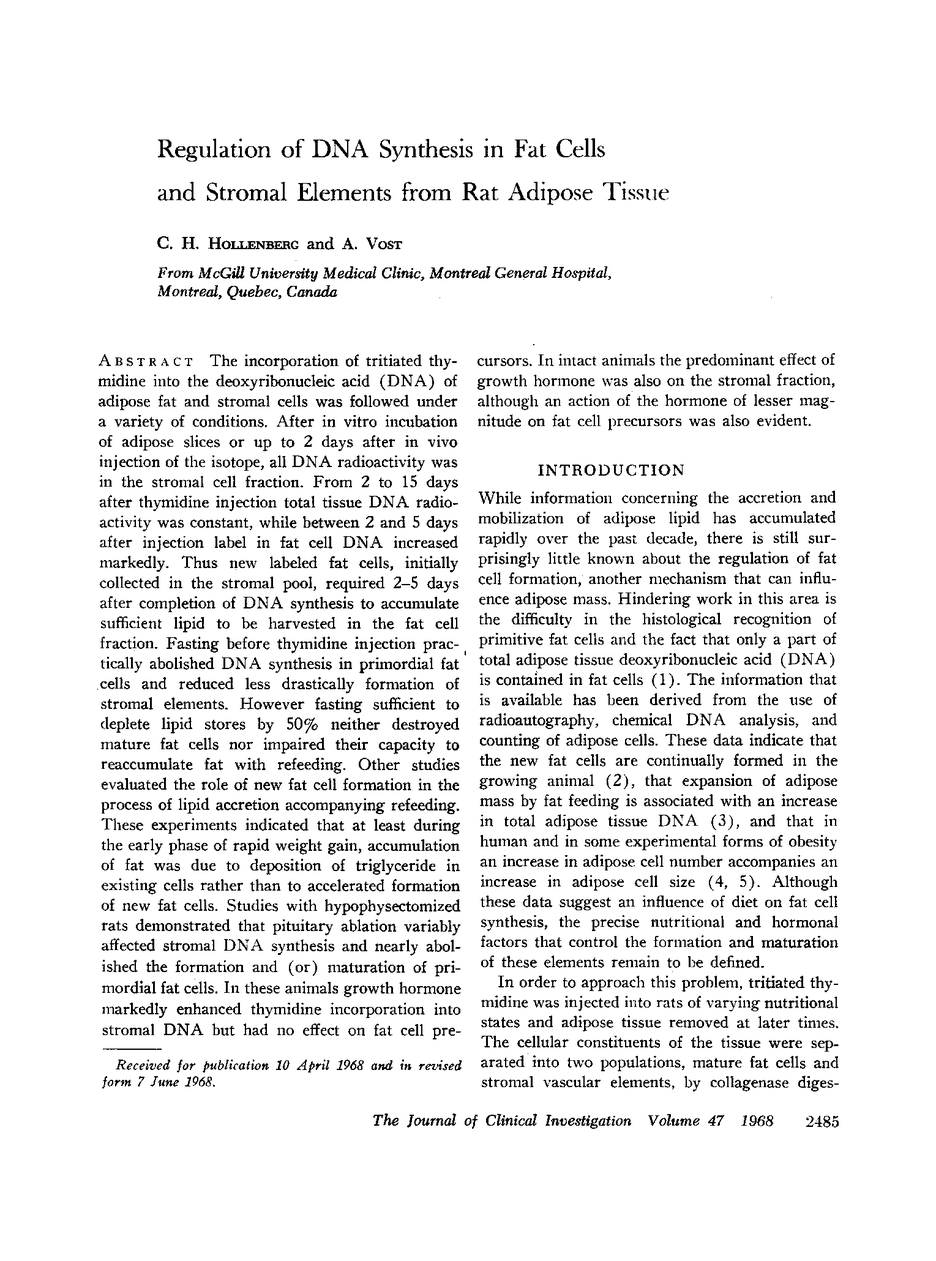Abstract
The incorporation of tritiated thymidine into the deoxyribonucleic acid (DNA) of adipose fat and stromal cells was followed under a variety of conditions. After in vitro incubation of adipose slices or up to 2 days after in vivo injection of the isotope, all DNA radioactivity was in the stromal cell fraction. From 2 to 15 days after thymidine injection total tissue DNA radioactivity was constant, while between 2 and 5 days after injection label in fat cell DNA increased markedly. Thus new labeled fat cells, initially collected in the stromal pool, required 2-5 days after completion of DNA synthesis to accumulate sufficient lipid to be harvested in the fat cell fraction. Fasting before thymidine injection practically abolished DNA synthesis in primordial fat cells and reduced less drastically formation of stromal elements. However fasting sufficient to deplete lipid stores by 50% neither destroyed mature fat cells nor impaired their capacity to reaccumulate fat with refeeding. Other studies evaluated the role of new fat cell formation in the process of lipid accretion accompanying refeeding. These experiments indicated that at least during the early phase of rapid weight gain, accumulation of fat was due to deposition of triglyceride in existing cells rather than to accelerated formation of new fat cells. Studies with hypophysectomized rats demonstrated that pituitary ablation variably affected stromal DNA synthesis and nearly abolished the formation and (or) maturation of primordial fat cells. In these animals growth hormone markedly enhanced thymidine incorporation into stromal DNA but had no effect on fat cell precursors. In intact animals the predominant effect of growth hormone was also on the stromal fraction, although an action of the hormone of lesser magnitude on fat cell precursors was also evident.
Authors
C. H. Hollenberg, A. Vost
Other pages:
| 2485 | 2486 | 2487 | 2488 | 2489 | 2490 | 2491 | 2492 | 2493 | 2494 | 2495 | 2496 | 2497 | 2498 |




